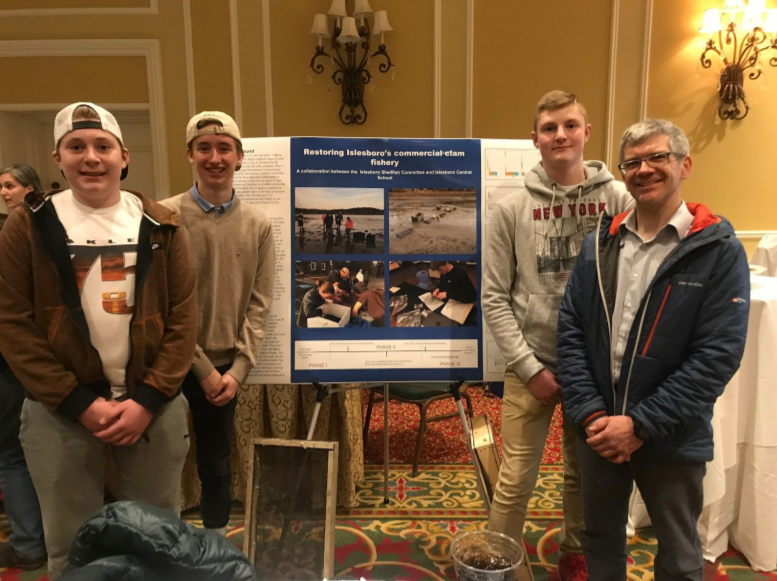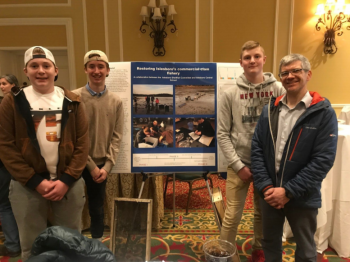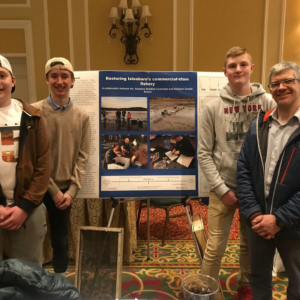Islesboro community project aims to re-establish commercial clam fishery
ROCKPORT — At the recent Shellfish Focus Day at the Fisherman’s Forum, Islesboro Central School students presented a poster representing the island’s efforts to restore Islesboro’s clam fishery. Previous research on soft shell clams in Maine suggest that the largest negative impact on wild clam recruitment is due to predation by the invasive green crab and other predators, according to ICS, in a news release.
On behalf of the project, Islesboro resident and shellfish committee member Janis Petzel recently applied for and was awarded a grant from the Maine Shellfish Restoration and Resilience Project and Broadreach. The funds from the grant will be used to continue this work, and to send students to Downeast Institute where they can learn more about shellfish restoration and aquaculture. Simultaneously, Islesboro is also taking part in continued investigations with Dr. Brian Beal on clam survivorship and fishery restoration along the coast of Maine supported by a Sea Grant award.
This is the second year that Islesboro Central School students (ICS), the Islesboro Shellfish Committee (ISC), and Dr. Brian Beal of University of Maine at Machias and director of The Downeast Institute, and local citizens have collaborated on research aiming to describe the extent of clam recruitment and retention on mudflats around the island of Islesboro, and to work on solutions to protect the juvenile clams in the face or pressure from predators.
“Our ultimate goal is to re-establish a commercial clam fishery on our island,” said the School.
The Shellfish Committee, students from ICS, and locals placed 42 wild clam recruitment boxes out on May 19, 2019. To prevent predation from crabs, each box was covered with 1/16” mesh screening, top and bottom. Larval clams settle down from the water column, into the boxes in the early summer. The boxes were collected on November 26, 2019. An estimated population for each box was calculated based on a sampling ratio of clams to mass. ICS students counted and measured the clams in each box and core sample from the three mud flats as part of the students’ Pathways program, also taking note of crabs and other species found.
Participants measured the lengths of 25 clams from each box, and measured the size of any green crabs that were found in the boxes. Mud core-samples were taken from the flats immediately next to the recruitment boxes at each location. This comparison allows an investigation of how predation affects clam recruitment on the flats. The difference is stark, with up to 1300 clams per square foot in the protected boxes and 0-3 clams per square foot in the mud, unprotected from predation.
From those boxes, the group collected several thousand juvenile clams (about 10 pounds) which are currently overwintering in a cove off Islesboro, inside of net bags in a protective lobster trap. They will be seeded onto the mudflats this spring and protected from predation under 14-ft X 14-ft nets with a 4.2 mm sized mesh. The group will also reseed clams into protected recruitment boxes to see how seeded-clam density affects survival and growth.
Event Date
Address
United States
























